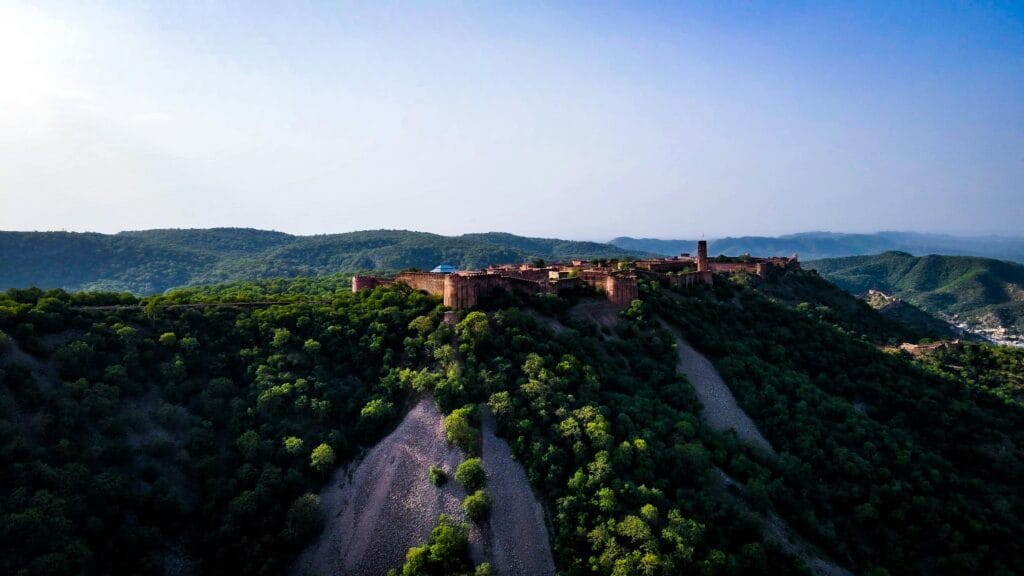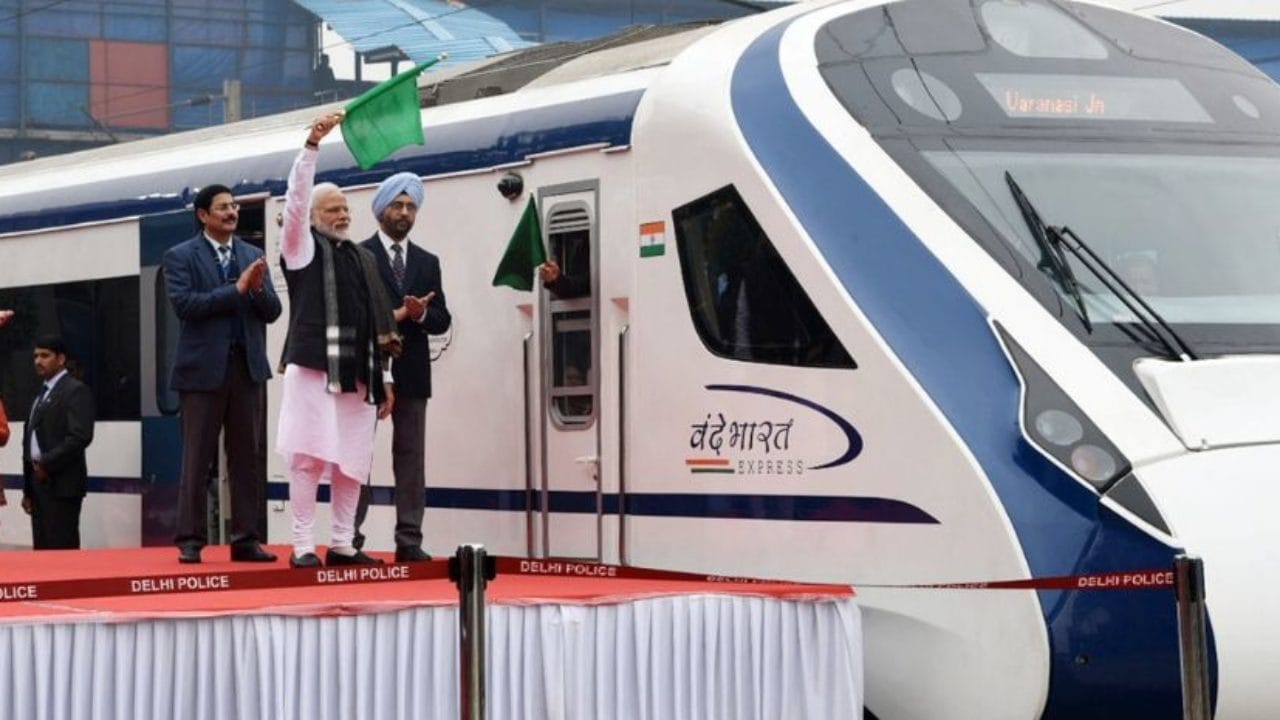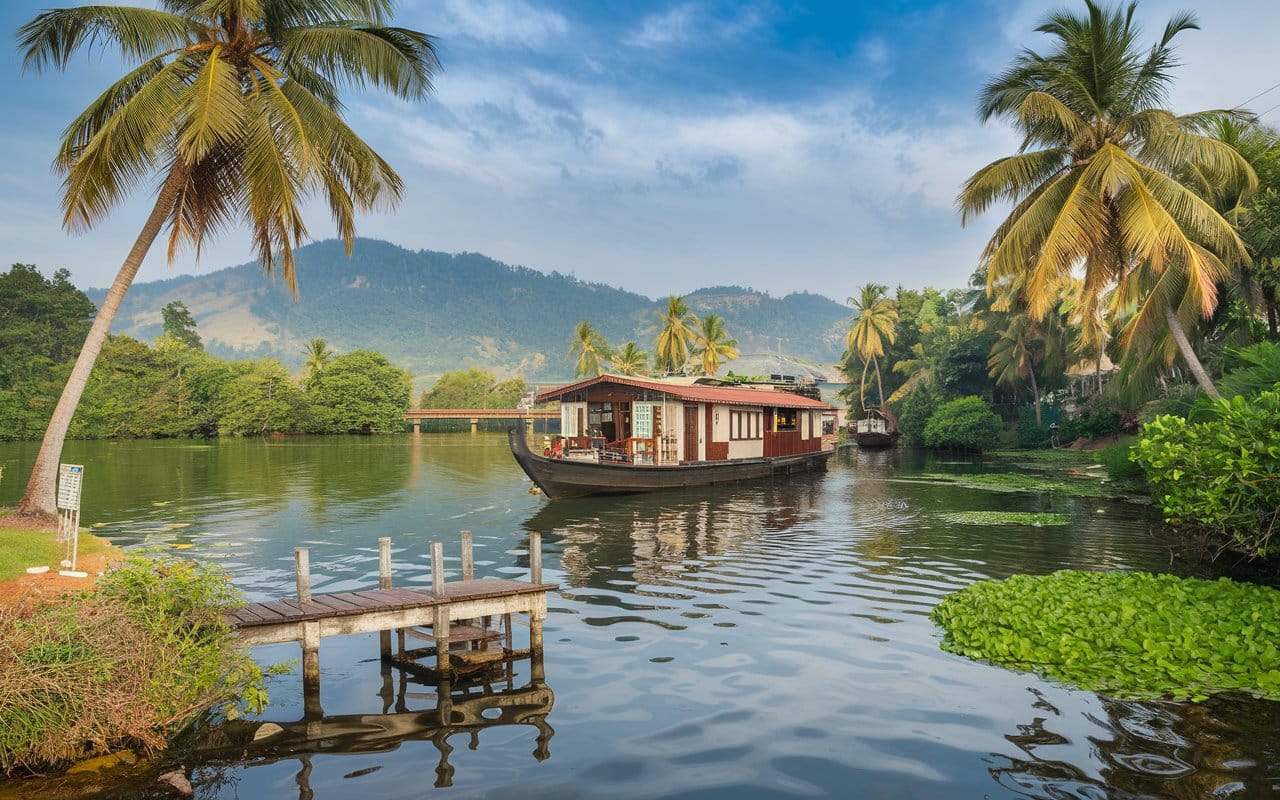Explore the majestic forts of Jaipur, including Amer Fort, Nahargarh Fort, and Jaigarh Fort. Uncover their rich history, stunning architecture, and must-visit spots in this comprehensive guide.

Jaipur Forts: A Journey Through Majestic History and Architecture
Jaipur, the crown jewel of Rajasthan, is renowned for its grand forts, opulent palaces, and vibrant culture. Among its many treasures, the forts of Jaipur stand out as iconic symbols of the city’s regal past and architectural brilliance. These forts are more than just historical monuments; they are gateways to the rich legacy of the Rajput kings who once ruled this land.
In this blog post, we’ll take an in-depth look at the most famous forts in Jaipur—Amer Fort, Nahargarh Fort, and Jaigarh Fort—while exploring their history, architecture, and tourist highlights.
1. Amer Fort: The Jewel of Jaipur
1.1 History of Amer Fort
Built in 1592 by Raja Man Singh, Amer Fort (often called Amber Fort) is a masterpiece of Mughal and Rajput architecture. The fort served as the primary residence of the Kachwaha rulers before Jaipur became their capital. Over the centuries, it has witnessed the rise and fall of empires, standing as a silent testimony to Rajasthan’s royal history.
1.2 Architectural Marvels
Amer Fort is an amalgamation of red sandstone and marble, featuring intricate carvings and lavish decorations. Highlights include:
- Ganesh Pol: A stunning gateway adorned with beautiful frescoes.
- Sheesh Mahal: A hall covered in mirrors that sparkle under even a single ray of light.
- Diwan-i-Aam and Diwan-i-Khas: Audience halls with exquisite pillars and murals.
1.3 Attractions in and Around Amer Fort
- Light and Sound Show: A captivating evening performance recounting the history of Jaipur and Amer Fort.
- Elephant Ride: A royal ascent to the fort on elephant back, reminiscent of the days of kings.
- Maota Lake: A picturesque lake at the base of the fort, perfect for photography enthusiasts.
2. Nahargarh Fort: The Abode of Tigers
2.1 Historical Overview
Constructed in 1734 by Maharaja Sawai Jai Singh II, Nahargarh Fort was initially built to strengthen Jaipur’s defense. Its name, meaning “Abode of Tigers,” comes from local folklore that the spirit of a tiger haunted the site during its construction.
2.2 Architectural Highlights
This fort is celebrated for its unique blend of Rajput and European architecture. Its most striking feature is the Madhavendra Bhavan, a series of interconnected rooms with stunning frescoes and open courtyards.
2.3 Why Visit Nahargarh Fort?
- Panoramic Views: Overlooking the city of Jaipur, Nahargarh offers breathtaking views, especially during sunset.
- The Stepwell: A hidden gem within the fort, the stepwell is a marvel of design and symmetry.
- Cafe by the Fort: An excellent spot to relax and enjoy a meal with a stunning backdrop.
3. Jaigarh Fort: The Fort of Victory
3.1 A Brief History
Perched on the Aravalli hills, Jaigarh Fort was built in 1726 by Maharaja Jai Singh II to protect Amer Fort. Known as the “Fort of Victory,” it served as a military stronghold and housed the region’s treasures.
3.2 Key Architectural Features
Jaigarh Fort is a robust structure with a focus on defense. Its highlights include:
- World’s Largest Cannon: The Jaivana Cannon, which never saw battle, yet remains an engineering marvel.
- Water Harvesting System: Ingeniously designed to collect and store rainwater.
- Subterranean Passages: Connecting the fort to Amer Fort, adding a layer of mystery.
3.3 Visitor Attractions
- Armory Museum: Showcasing weapons, armor, and war memorabilia.
- Watchtower Views: Offering unobstructed views of the surrounding countryside.
4. Jaipur’s Forts in Popular Culture
Jaipur’s forts have become a favorite backdrop for Bollywood films and destination weddings. Their grandeur and timeless beauty make them perfect for memorable events and cinematic storytelling.
5. Practical Tips for Visiting Jaipur Forts
5.1 Best Time to Visit
The ideal time to explore Jaipur’s forts is between October and March, when the weather is pleasant. Summers can be harsh, with temperatures soaring above 40°C.
5.2 Entry Fees and Timings
- Amer Fort: INR 500 for foreigners, INR 100 for Indians. Open from 8 AM to 5:30 PM.
- Nahargarh Fort: INR 200 for foreigners, INR 50 for Indians. Open from 10 AM to 5:30 PM.
- Jaigarh Fort: INR 200 for foreigners, INR 100 for Indians. Open from 9 AM to 4:30 PM.
5.3 How to Get There
- By Air: Jaipur International Airport is well-connected to major cities.
- By Train: Jaipur Junction serves as a central rail hub.
- By Road: Jaipur is easily accessible by bus, taxi, or private car from Delhi and other nearby cities.
Conclusion
Jaipur’s forts are not just architectural masterpieces; they are the heart and soul of Rajasthan’s history. Whether you’re marveling at the shimmering Sheesh Mahal in Amer, enjoying the sunset from Nahargarh, or exploring the military brilliance of Jaigarh, these forts promise an unforgettable journey.
Pack your bags, and let the timeless tales of Jaipur’s forts take you back in time!
FAQs
1. What is the best fort to visit in Jaipur?
Amer Fort is often considered the best due to its grandeur and historical significance, but each fort has unique attractions worth exploring.
2. Can I visit all three forts in one day?
Yes, with proper planning, you can cover Amer Fort, Jaigarh Fort, and Nahargarh Fort in a day. Start early and wear comfortable shoes.
3. Are there any guided tours available?
Yes, guided tours are available at all forts. Audio guides are also a popular option.
4. Is photography allowed inside the forts?
Photography is generally permitted, but some areas may require additional fees for cameras.
5. What are some nearby attractions to Jaipur’s forts?
Nearby attractions include the Jal Mahal, Hawa Mahal, and City Palace, all of which add to the rich cultural tapestry of Jaipur.


